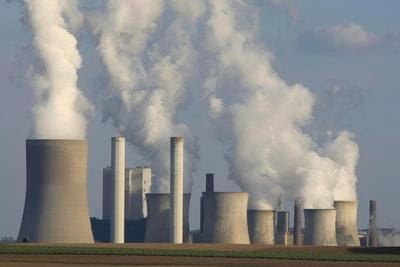Minimise the impact of plant failures
Safely returning damaged plant and equipment into operation
Challenge
 A control valve on a drain line in a large Victorian power station suffered widespread mechanical damage. This was thought to be the result of severe shock loading, probably due to impact(s) from high velocity water slugs in the upstream pipework. Subsequent NDT confirmed there was no cracking in the valve connection. However, areas with significant thinning were discovered. The nominal wall thickness of this section of piping was 12.7 mm and measurements in the thinnest areas approached 3 mm. The failure of this small valve and the associated thinning meant the entire unit was shut down. The unit had an outage scheduled approximately 3 weeks from the time of the incident and the owner/operator sought assurance that the unit could be safely returned to service for that period, when full repairs could be undertaken during the outage.
A control valve on a drain line in a large Victorian power station suffered widespread mechanical damage. This was thought to be the result of severe shock loading, probably due to impact(s) from high velocity water slugs in the upstream pipework. Subsequent NDT confirmed there was no cracking in the valve connection. However, areas with significant thinning were discovered. The nominal wall thickness of this section of piping was 12.7 mm and measurements in the thinnest areas approached 3 mm. The failure of this small valve and the associated thinning meant the entire unit was shut down. The unit had an outage scheduled approximately 3 weeks from the time of the incident and the owner/operator sought assurance that the unit could be safely returned to service for that period, when full repairs could be undertaken during the outage.
Solution
HRL's approach was to determine if the increased stresses in the thinned area were within the limits specified in the boiler and pressure vessel standards. The irregularity of the thinning and the presence of the nozzle and associated compensation plate meant that simplified code-based assessments could not be used in this case. Finite element models of the nozzle, in the design and the thinned condition, were prepared and used to calculate the membrane and bending stresses under design pressure loading. The analysis confirmed there was a significant increase in the stress in the thinned area. However, in all modelled scenarios, the maximum stress was less than the maximum allowable stress specified in the standard.
Results
From the analysis, HRL could recommend that the unit was returned to service. Significantly, the modelling and analysis was completed within 24 hours, meaning there was minimal service interruption resulting from the drain line failure. As the assessment was done under design pressure loading, the return to service was conditional on the upstream isolation of the drain lines to avoid any possible shock loads. Several other recommendations for operational safety were included together with the scope for internal inspections to be completed at the scheduled outage.
| Tags:ReliabilityEfficiencySustainability |


) Author:
Author:
























